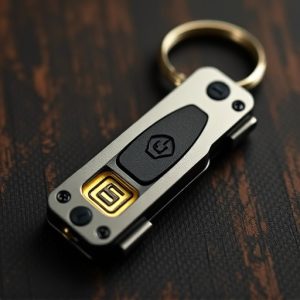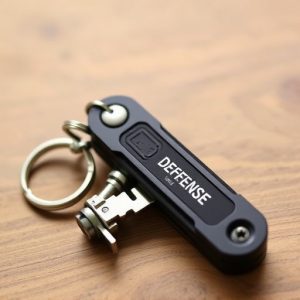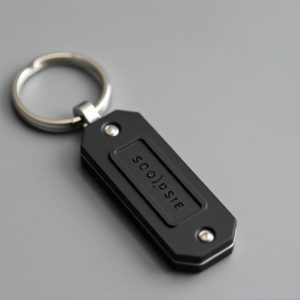Navigating Legal Carry: Keychain Weapon Safety & Effectiveness for Beginners
For Keychain Weapon Striking Drills Beginners in the US, understanding state-specific laws regarding…….
For Keychain Weapon Striking Drills Beginners in the US, understanding state-specific laws regarding open or concealed carry is crucial before practicing. Balance compactness and effectiveness in tool selection, focusing on tactical flashlights or multi-tools. Master fundamental striking techniques like backfist and punch through practice against resistant surfaces or partners. Prioritize safety, proper training, and regular practice to ensure proficiency and legal compliance while enhancing personal safety and public well-being.
“In today’s uncertain times, understanding your rights and preparing for personal safety is paramount. This article guides you through the intricate world of defensive keychain legal carry guidelines across states. We explore the nuances of state laws regarding keychain weapons, offering insights on choosing effective self-defense tools. Moreover, we introduce essential keychain weapon striking drills tailored for beginners, ensuring practical preparation. Additionally, we delve into legal considerations and safety tips, empowering individuals to make informed decisions about carrying defensive keychains responsibly.”
- Understanding State Laws on Defensive Keychain Weapons
- Choosing the Right Keychain Weapon for Self-Defense
- Effective Keychain Weapon Striking Drills for Beginners
- Legal Considerations and Safety Tips for Carrying a Defensive Keychain
Understanding State Laws on Defensive Keychain Weapons
In the United States, laws regarding defensive keychains and their legal carry vary widely from state to state. For beginners considering using a keychain weapon for self-defense, understanding these laws is crucial. Many states allow the open or concealed carrying of certain types of defensive keychains without a permit, but specifics differ greatly. Some states only permit the use of keychains as self-defense tools in specific situations, like within one’s own home or vehicle. Others may restrict the type of keychain allowed, focusing on those with a simple design and limited cutting capabilities.
For those engaging in keychain weapon striking drills as a beginner, it’s important to familiarize themselves with their state’s regulations. This includes knowing what constitutes a legal self-defense tool, understanding range safety rules, and learning about any required training or certifications. With proper education, beginners can ensure they’re following the law while honing their defensive skills, choosing an appropriate keychain weapon for their needs, and gaining confidence in its use.
Choosing the Right Keychain Weapon for Self-Defense
When selecting a keychain weapon for self-defense, beginners should focus on tools that are easy to handle and offer a reliable means of protection. The concept of a keychain weapon is to provide a discreet and portable option for personal safety, but it’s crucial to strike a balance between compactness and effectiveness. Look for items like small tactical flashlights or multi-tools with built-in blades, which can serve as effective striking tools while still remaining easily concealable.
For those new to self-defense training, practicing basic striking drills with these keychain weapons is essential. Beginners should start with simple techniques such as strikes to the throat, groin, or eyes, learning proper grip and angle for maximum impact. Regular practice will enhance comfort and confidence in using the keychain weapon, ensuring users can deploy it effectively when needed.
Effective Keychain Weapon Striking Drills for Beginners
For beginners looking to improve their self-defense skills with a keychain weapon, mastering striking drills is essential. Start with fundamental techniques like the backfist and punch, focusing on proper grip, target acquisition, and follow-through. Practice these moves against a resistant surface or a training partner to simulate real-world scenarios. Remember, the goal is not just speed but also accuracy and control, ensuring you can effectively deploy your keychain weapon in a high-pressure situation.
Drills should include exercises that mimic common self-defense situations. For example, try practicing strikes from different angles while moving, mimicking an attacker’s advance. Another effective drill involves setting up cones or targets at various distances and speeds, challenging yourself to react and strike accurately under pressure. Regularly reviewing and refining these drills will build muscle memory, making your keychain weapon a reliable tool for personal safety.
Legal Considerations and Safety Tips for Carrying a Defensive Keychain
When it comes to carrying a defensive keychain, understanding the legal considerations is paramount. Different states have varying regulations regarding the open or concealed carry of such devices. It’s crucial for beginners to research and understand their state’s specific laws before diving into keychain weapon striking drills. Many jurisdictions require permits for certain types of self-defense tools, and some may have restrictions on where and how they can be carried.
Safety should always be the top priority when handling any personal defense tool, including keychains designed for self-defense. Users must ensure they are trained adequately in their use, as improper handling could lead to accidents or excessive force during a confrontation. Regular practice sessions, focusing on keychain weapon striking drills, can help beginners gain proficiency and confidence while adhering to the law. Remember, responsible ownership and usage of such devices contribute to public safety and legal compliance.
Understanding state laws, selecting the appropriate keychain weapon, and mastering effective striking drills are essential steps in equipping yourself for self-defense. Always prioritize safety by adhering to legal guidelines and carrying your defensive keychain responsibly. With proper training and awareness, these compact tools can empower you to protect yourself in unexpected situations. Remember, knowledge and preparation are key to staying safe while enjoying the convenience of a keychain weapon.


